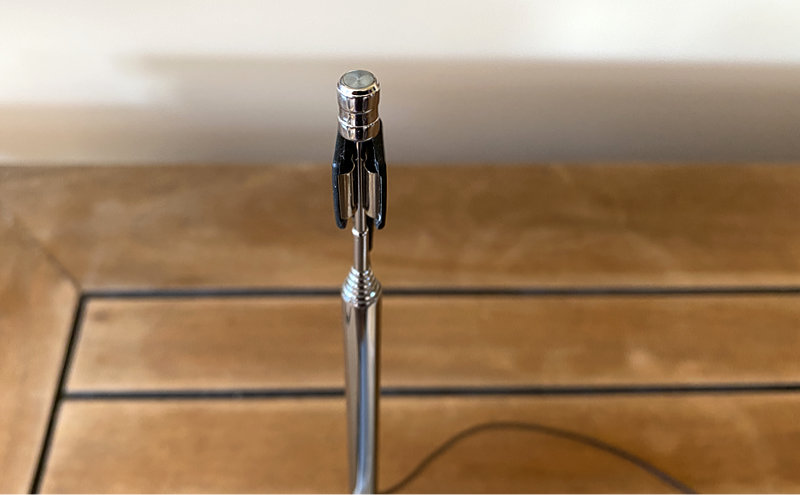External Antenna For Portable Shortwave Radio Improved Reception
An external antenna for your portable shortwave radio. It’s a “must have” in my opinion, for improved reception.
My portable shortwave radio (Sony SW7600GR) came with one (as shown in the attached pictures). Prior to that purchase, I also owned a Grundig which also included the same style portable shortwave antenna.
There are several brands of this style. They’re all pretty much the same.
I’ll describe their simple, but effective, functionality below. (And a do it yourself). Also, how and when I use it.
For the interest of those who have purchased a portable shortwave radio. You may be interested in getting the longest range reception as possible. The best way to achieve that is to use an external antenna.
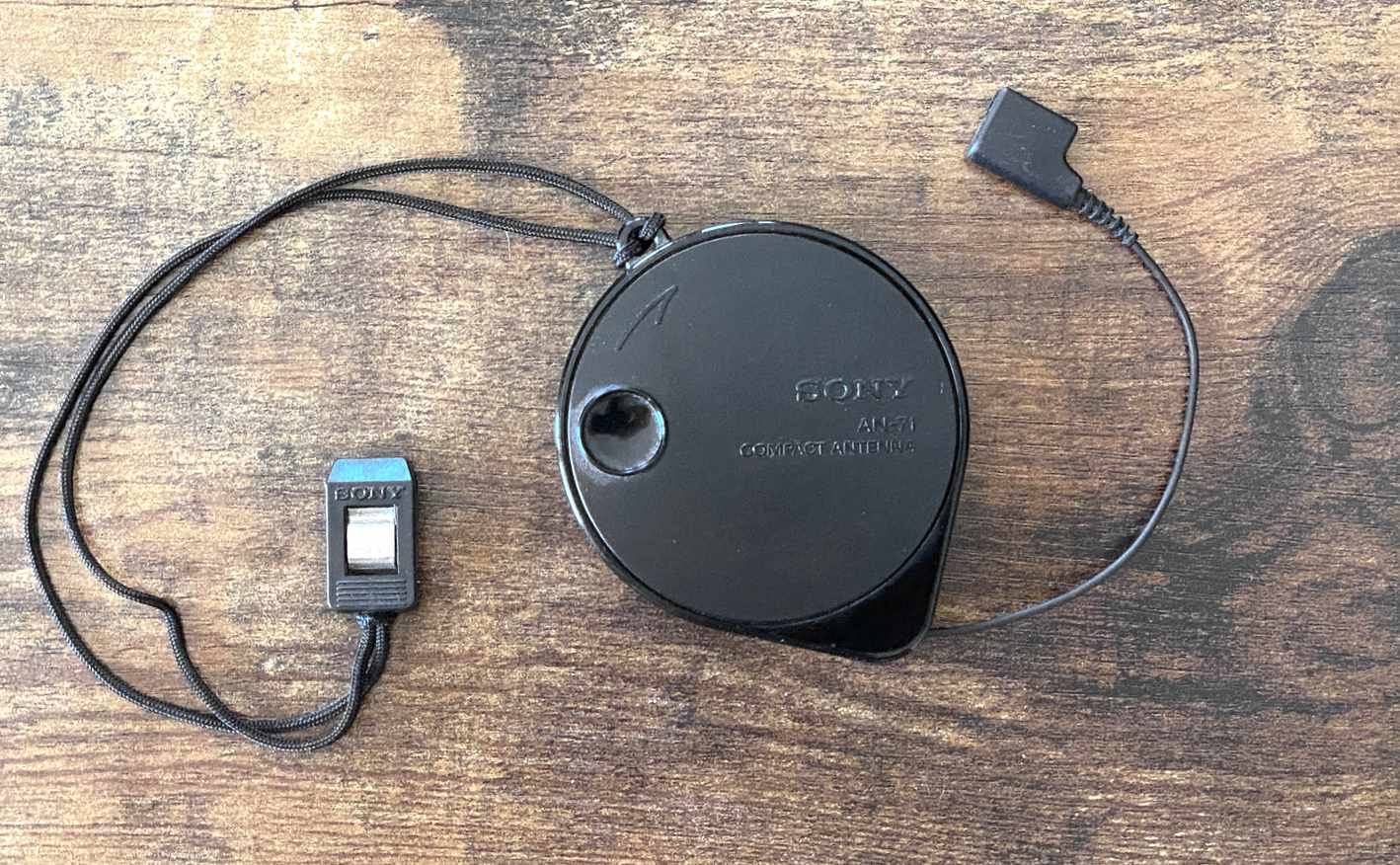
The image above shows my Sony compact antenna. It functions just like the others. It extends to 23 feet and can be easily rewound into its compact case
It’s made up of a spool of antenna wire. The wire is easily pulled out. It also winds back in nicely while using your finger in the recessed dimple to reel it back in.
There’s a clip on one end of the antenna wire. It is electrically connected with the wire. It is designed to clip on to an existing whip antenna.
A strap is connected to the body of the antenna reel. A clip on the strap enables attachment to whatever… A curtain works nicely (for example).
My Recommendation For External Wire Antenna – Improved Reception Of Portable Shortwave Radio
With that said, here’s my recommendation if you’re looking to get one for your own portable shortwave radio, regardless of the brand.
The best of this antenna style right now, in my opinion, is the Sangean ANT-60.
Not only does it have a clip to Snap-On to your existing whip antenna, but it also has an adapter to plug directly into the antenna jack on your portable shortwave radio (if so equipped).
SANGEAN ANT-60
(view on amzn)
Improved Reception With External Wire Antenna
Some portable radios have pretty good built in antennas and ‘front-end’ circuitry to enable good long distance reception (conditions permitting). But adding an external antenna will improve reception dramatically.
Here’s my portable Sony radio with the external antenna clipped to the built-in whip antenna.
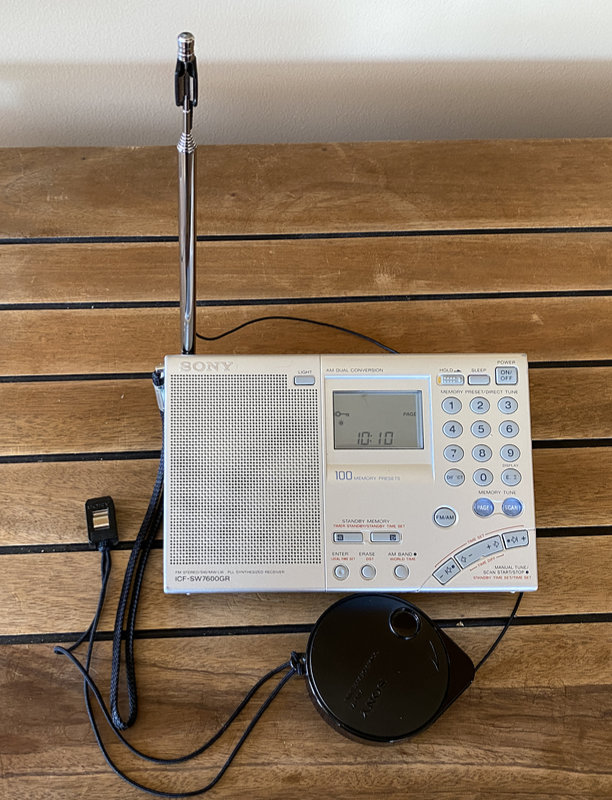
Here’s the clip for attaching the antenna to “something”.
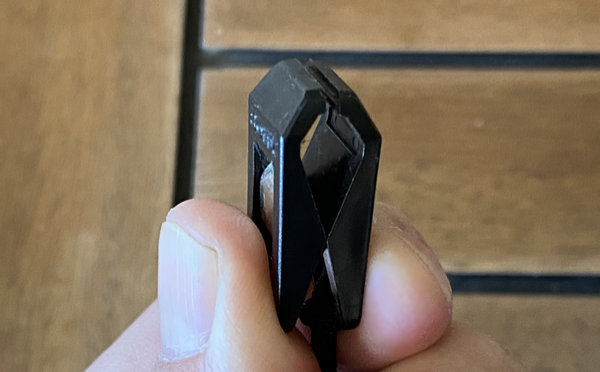
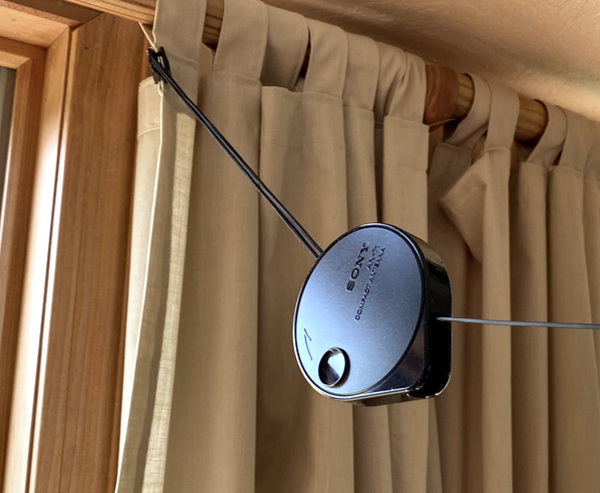
Most all portable shortwave radios will have a telescoping antenna as well as one that’s built inside (mainly for AM radio band reception). Some radios (usually the higher priced models) will have an external antenna jack, usually a 3.5mm (1/8″), where you can plug in your own external antenna.
Do-it-Yourself – Long Wire External Antenna
You could also do it yourself. Although the convenience of the rollup antenna (described above) is nice, you could simply attach a length of ordinary wire to it (by wrapping the (bare, stripped) end of it around the whip).
Or, you might “get fancy” and solder an alligator clip to the end of your wire. That’s what I did (with previous experimentation).
Although there are varying antenna models, do-it-yourself designs, configurations and formulas to use while calculating exact lengths, etc.. However when it comes to simply listening to shortwave radio (not transmitting), generally speaking just use a LONG WIRE. It’s simple, and it works quite well!
The wire gauge doesn’t matter. Because you’re not transmitting. My long wire was only 22 gauge.
Here’s a nice spool of Black Flexible 22 AWG Stranded Tinned Copper Wire:
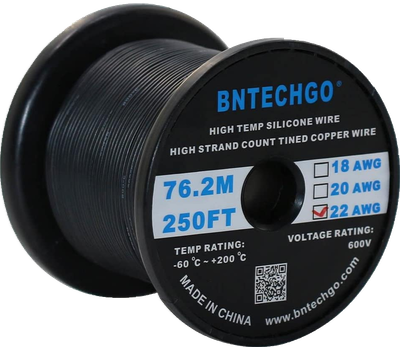
250-foot Spool
(amzn)
Anyway, the simple message is that for better shortwave radio reception, get yourself a portable external antenna. Either the one up above, or a spool of wire for a do-it-yourself long wire antenna. Makes a big difference…
Oh, I almost forgot. How and when do I use this antenna?
Well, whenever I go on a road trip, I always take my portable shortwave radio (and external antenna). Also, we have a camper. Whenever we go on one of those trips, I use it too. When I’m at home, I usually use a different radio for listening. I happen to have a YAESU FT-450 Ham radio and a different antenna mounted outside. But I digress…
[ Read: Best Portable Shortwave Radios ]

